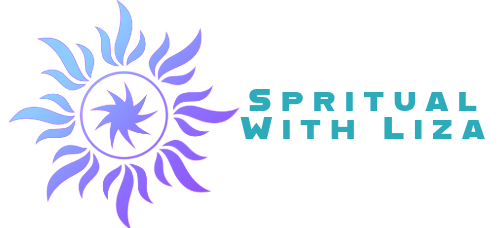13 Spiritual Meanings of Blood Clots
As we explore the spiritual meanings behind blood clots, we find that they can symbolize much more than a medical concern. They often reflect emotional blockages, unresolved trauma, and even our fears of change. By examining these connections, we can uncover deeper insights into our life patterns and personal growth. It's intriguing to contemplate how these physical manifestations might serve as calls for mindfulness or transformation. What if understanding these meanings could lead us to a more profound awareness of ourselves? Let's uncover the layers together.
Key Takeaways
- Blood clots symbolize emotional blockages, indicating unresolved feelings that require acknowledgment for healing and clarity.
- They represent the need for transformation, reflecting resistance to change and the energy stagnation in one's life.
- Blood clots can signify the presence of stress, manifesting physical symptoms from unresolved trauma or emotional turmoil.
- They illustrate resilience, showcasing the body's self-protection mechanisms in response to life's unpredictability and challenges.
- Blood clots may encourage introspection, prompting individuals to explore ancestral influences and emotional patterns affecting their well-being.
Emotional Blockages
Have we ever considered how our emotions can manifest physically in our bodies? Often, we experience emotional blockages that can lead to discomfort or even health issues. These blockages arise when we suppress feelings, whether out of fear, shame, or the belief that we must appear strong.
Together, we can explore how acknowledging and processing these emotions can lead to profound emotional release and mental clarity.
When we allow ourselves to feel, we create a space for healing. It's crucial to recognize that these blockages don't make us weak; instead, they reveal our humanity. We're not alone in this journey. By sharing our experiences and feelings, we can foster a sense of belonging within our community, supporting one another as we navigate these often challenging waters.
As we engage with our emotions, let's remember that it's okay to seek help. Whether through conversations, therapy, or creative expression, we can find ways to release what's holding us back.
Together, we can transform our emotional struggles into pathways of understanding, leading us to a more vibrant and connected existence. Let's embrace this journey of self-discovery and growth, lifting each other as we go.
Fear of Change
Acknowledging our emotional blockages often brings us face to face with another significant challenge: the fear of change. This fear can feel overwhelming, as it often intertwines with our fear of vulnerability. We might find ourselves resisting the unknown, clinging to familiar patterns even when they no longer serve us.
Embracing uncertainty is essential for growth, yet it can be intimidating.
To navigate this fear together, let's consider these three empowering steps:
- Recognize Our Feelings: Identifying our fears allows us to understand their roots. Are we afraid of failing? Of being judged? Acknowledging these emotions is the first step toward healing.
- Cultivate Trust: Trusting ourselves and the process can transform our perspective. We can remind ourselves that change often brings new opportunities and experiences.
- Take Small Steps: We don't need to leap into the unknown all at once. Gradually embracing change can help lessen the fear, making it more manageable.
As we move forward, let's support each other in this journey, knowing that our collective courage can lead us to a brighter, more fulfilling path.
Unresolved Trauma
How do we begin to heal from unresolved trauma that lingers beneath the surface? We must first acknowledge the unresolved memories that haunt us. These memories can manifest physically, often leading to feelings of stagnation and discomfort. By bringing awareness to these experiences, we open ourselves to the possibility of emotional release.
Together, we can create a safe space where vulnerability is welcomed. It's okay to feel discomfort as we navigate this journey. We're not alone; many of us carry these burdens, often without realizing their impact on our lives. By sharing our stories, we foster connection and understanding, allowing for healing to take place.
Let's explore techniques that help us process these unresolved traumas—be it through journaling, mindfulness, or supportive conversations. When we express our feelings, we release the heavy weight of past pain. This act of sharing allows us to reclaim our power and begin to heal.
We can support one another as we uncover the roots of our trauma, transforming pain into strength. Together, we can embrace the journey of healing, finding solace in the shared experience and knowing that brighter days lie ahead.
Energy Stagnation
As we begin to unpack and heal from unresolved trauma, we often encounter the phenomenon of energy stagnation. This stagnation can manifest as a vigor imbalance, leaving us feeling drained or disconnected.
When our energy flow is obstructed, it can impact not only our physical health but also our emotional and spiritual well-being.
To recognize and address energy stagnation, we can consider these three aspects:
- Awareness: We need to tune into our bodies and emotions. Are there areas where we feel heaviness or discomfort? Acknowledging these feelings is the first step toward healing.
- Release: Finding healthy ways to express and release pent-up emotions is crucial. Whether through movement, art, or conversation, letting go of what no longer serves us can restore our energy flow.
- Nurture: Engaging in self-care practices can help revitalize our spirits. This might include meditation, spending time in nature, or connecting with supportive communities that encourage us to thrive.
Transformation and Renewal
Transformation and renewal often emerge from the depths of our struggles, guiding us toward a more vibrant existence. We all experience life cycles that challenge us, but it's within these challenges that we find opportunities for personal growth. Those moments of discomfort can be powerful catalysts, urging us to shed old patterns and embrace new beginnings.
As we navigate through our unique journeys, we may discover that what once seemed like stagnation is really a crucial stage in our evolution. Blood clots, in their spiritual context, may symbolize the need to release what no longer serves us. They remind us that we possess the strength to break free from limiting beliefs and behaviors.
Together, we can cultivate a deeper understanding of our experiences and honor the cycles of life. By embracing transformation, we create space for renewal, allowing us to flourish in ways we never thought possible.
We're not alone in this process; we're part of a collective movement toward healing and growth. So let's celebrate our transformations, knowing each step we take brings us closer to a more authentic and fulfilling life.
Need for Healing
Healing is an essential part of our human experience, and the presence of blood clots can symbolize a deeper call to address unresolved wounds, both physical and emotional.
As we navigate our healing journey together, we might find that these challenges encourage us to look inward and cultivate holistic practices that support our well-being.
Here are three powerful steps we can take to embrace our need for healing:
- Mindfulness: Let's take moments each day to connect with our breath and observe our thoughts without judgment. This practice allows us to acknowledge our emotions and move towards healing.
- Nourishment: We can focus on nourishing our bodies with wholesome foods that promote circulation and health. What we consume affects not just our physical health but also our emotional and spiritual states.
- Community: Let's lean on one another for support. Sharing our experiences and feelings with trusted friends or groups can help us feel less isolated in our struggles.
Repressed Anger
While exploring our emotional landscape, we might discover that repressed anger can manifest in various ways, including physical symptoms like blood clots. When we push down our feelings, especially anger, it doesn't simply vanish; it festers within us, creating tension that can lead to physical ailments.
It's crucial to acknowledge that these repressed emotions aren't a sign of weakness but a common human experience. We all have moments where we struggle with anger management. Perhaps we've been conditioned to believe expressing anger is inappropriate or unsafe.
However, finding safe outlets for our feelings is imperative for our overall well-being. When we hold onto anger, we risk not only our emotional health but also our physical health.
Let's create a space together where we can honor our emotions without judgment. By acknowledging our anger and allowing ourselves to express it constructively, we can begin to heal.
It's okay to feel what we feel; we're not alone in this journey. Embracing our emotional truth can lead us toward a deeper understanding of ourselves and a healthier, more balanced life.
Connection to Ancestry
As we navigate our emotional experiences, it's important to recognize how our connections to ancestry can influence our physical and mental well-being.
Our ancestors carry a wealth of ancestral wisdom that can guide us through life's challenges and promote generational healing. When we honor these connections, we can uncover layers of understanding that help us heal.
Here are three ways our ancestry can impact us:
- Emotional Patterns: We may find ourselves repeating emotional patterns inherited from our ancestors. Acknowledging these can pave the way for healing.
- Cultural Practices: Embracing rituals and traditions from our heritage can create a sense of belonging and continuity, providing comfort in times of distress.
- Shared Stories: Listening to the stories of our ancestors allows us to connect with their struggles and triumphs, fostering compassion and resilience within ourselves.
Symbol of Life Force
Blood clots can be seen as a powerful symbol of our life force, representing both the energy that flows through us and the obstacles we encounter along our journey. They remind us that our life essence is dynamic, shaping our experiences and emotions.
Just like blood clots, our liveliness can sometimes be hindered by challenges that disrupt our flow, yet these very challenges often lead us to deeper understanding and growth.
When we reflect on clots, we might notice how they symbolize resilience. They emerge when our body senses a need to protect itself, creating a barrier to prevent loss.
In this way, blood clots serve as a reminder that our liveliness isn't just about the smooth flow of energy; it's also about our ability to adapt and respond to life's unpredictability.
As we embrace this symbol, let's honor the moments when we've felt blocked or restricted. These experiences can ultimately lead us to breakthroughs, reminding us that our journey is a dance between flow and resistance.
In recognizing this, we foster a sense of belonging, knowing that we all share in the ebb and flow of our life force.
Spiritual Awakening
The journey of spiritual awakening often feels like a profound reckoning within ourselves, revealing layers of consciousness we may not have previously acknowledged.
Together, we explore this transformative path that invites us to embrace our spiritual growth and personal evolution.
As we navigate this awakening, we can focus on three key aspects:
- Self-Reflection: It's vital to take time for introspection, allowing us to uncover our true desires and fears. This honesty facilitates deeper understanding.
- Connection: We're reminded of our interconnectedness. Embracing this unity helps foster compassion and empathy, enriching our relationships and sense of belonging.
- Integration: As we experience shifts in consciousness, integrating these lessons into our daily lives becomes essential. This integration allows our spiritual insights to manifest in meaningful ways.
In this shared journey, let's honor our unique paths and celebrate our collective growth.
Each step we take brings us closer to our authentic selves, encouraging us to support one another in our personal evolution.
Together, we can navigate this beautiful awakening, cultivating a deeper understanding of ourselves and the world around us.
Manifestation of Stress
Many of us experience stress in various forms, often manifesting in physical symptoms that serve as signals from our bodies. When we notice these signals, it's crucial to pause and reflect on their meaning. Blood clots, for example, can symbolize the congestion of our emotions and thoughts, urging us to explore our stress management techniques more deeply.
In our shared journey, we recognize the importance of developing coping strategies that resonate with our unique experiences. Whether it's practicing mindfulness, engaging in creative outlets, or nurturing our bodies through movement, we can find ways to release built-up tension.
Each of us has different paths, but together, we can cultivate a supportive environment where stress doesn't overwhelm us.
Let's remind one another that it's okay to seek help and lean on our community. By openly discussing our struggles and sharing our coping mechanisms, we create a safe space for healing.
Ultimately, acknowledging the spiritual meanings behind our physical symptoms invites us to take action, prioritizing our well-being and fostering resilience as we navigate life's challenges. Together, we can transform stress into an opportunity for growth and connection.
Reflection of Relationships
Reflecting on our relationships can reveal deeper insights into the emotional landscapes we navigate. By examining our connections, we can better understand the relationship dynamics at play and how they shape our experiences. This reflection isn't just about identifying problems; it's about fostering growth and promoting healthier interactions.
Here are three key aspects to contemplate:
- Emotional Boundaries: Are we establishing healthy limits to protect our emotional well-being? Recognizing our needs helps us communicate effectively and maintain balance in our relationships.
- Patterns and Cycles: Do we notice recurring themes or behaviors in our interactions? These patterns can illuminate unresolved issues that may be impacting our connections.
- Support and Nurturing: Are we surrounding ourselves with individuals who uplift and inspire us? Building a supportive network is essential for our emotional health and sense of belonging.
Through this reflective process, we cultivate a deeper understanding of ourselves and our relationships.
By actively engaging with these insights, we can enhance our emotional boundaries and foster connections that truly resonate with our hearts.
Together, let's embrace this journey of discovery and growth.
Call for Mindfulness
Amid the whirlwind of daily life, we often find ourselves caught in a cycle of distraction, overlooking the profound significance of being present. It's easy to let our minds drift to future worries or past regrets, but when we cultivate mindful awareness, we reconnect with our true selves and the world around us. This is a gentle reminder for all of us to embrace conscious living.
By practicing mindfulness, we create space for clarity and understanding. We can notice the subtleties of our emotions, the thoughts that swirl like leaves in the wind, and the connections that bind us to each other. This awareness not only enhances our individual journeys but also strengthens our sense of belonging in this shared experience of life.
Let's commit to moments of stillness amidst the chaos. Whether it's through meditation, a mindful walk, or simply pausing to breathe, we can ground ourselves in the present. By doing so, we invite healing and transformation into our lives.
Together, let's honor the beauty of now, nurturing our spirits and fostering deeper connections with ourselves and each other.
Frequently Asked Questions
How Do Blood Clots Relate to Spiritual Energy Flow?
We recognize blood clots can symbolize energy blockages that hinder emotional release. By exploring these connections, we uncover deeper insights into our shared experiences, fostering healing and growth together in our journey toward emotional and spiritual wellness.
Can Blood Clots Symbolize Past Life Experiences?
We believe blood clots can symbolize past life experiences, reflecting emotional blockages or unresolved issues. By exploring this spiritual symbolism, we can embrace healing and understanding, fostering a deeper connection to our shared journeys and growth.
What Role Do Blood Clots Play in Spiritual Healing Practices?
In our journey of healing, we've found that blood clots can signify energy blockages. Through compassionate rituals, we can release these blockages, inviting deeper healing and connection within ourselves and our community. Together, we thrive.
Are There Specific Crystals to Aid in Blood Clot Healing?
We believe certain healing crystals, like amethyst and clear quartz, can enhance our healing journey. By harnessing crystal energy, we create a supportive environment for ourselves, fostering connection and compassion in our shared experience.
How Can Meditation Help With Blood Clot-Related Spiritual Issues?
We can explore meditation techniques together, allowing for emotional release and healing. By connecting deeply with ourselves, we foster a sense of belonging and support, helping us navigate challenges with compassion and understanding.

Liza Stockholm is an esteemed spiritual guide and the visionary behind Spiritual with Liza. With a profound passion for empowering others on their spiritual journey, Liza offers a blend of educational content and personal guidance. Her expertise in spirituality is rooted in years of dedicated practice and study, making her a trusted companion for those seeking enlightenment and inner peace.






